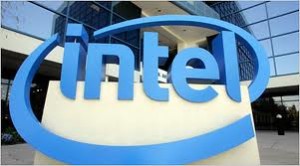NEW YORK: Intel, the world’s largest maker of chips for PCs, is remaining steadfast amid a drastic slowdown in computer sales.
Intel said it’s keeping its sales and margin forecasts for this year, even as first-quarter PC sales plunged 14 per cent from a year ago, as measured by research firm IDC. The company is helped by rising shipments of chips for servers.
Consumers are shifting their consumer electronics dollars away from PCs and toward smartphones and tablets, few of which use Intel chips. The company is scrambling to get a foothold in these devices, but has had little traction so far.
“We now compete wherever there is computing,” departing CEO Paul Otellini said on a conference call Tuesday.
The Santa Clara, California, chipmaker met analyst forecasts for the just-ended quarter. It earned $2 billion, or 40 cents per share, in the January to March period. That was down 27 per cent from $2.74 billion, or 53 cents per share, a year ago.
Revenue was $12.6 billion, slightly below the midpoint of Intel’s own forecast range. The figure was down 2.3 per cent from $12.9 billion a year ago.
Intel shares rose 7 cents in extended trading, after the release of the report. They closed up 54 cents, or 2.5 per cent, at $21.92 in the regular session.
Intel said it shipped 7 per cent fewer PC chips compared to a year ago, but 6 per cent more server chips.
Intel said it still expects to increase its sales by a few per cent this year, and to keep its gross margin at 60 per cent, down slightly from its recent three-year average of 63 per cent. Analysts polled by FactSet expect revenue to be flat, on average.
For the quarter that just started, Intel expects revenue of $12.9 billion, plus or minus $500 million. That’s in line with analyst expectations. Intel is launching this year’s crop of new chips in the quarter, codenamed “Haswell,” and is counting on them to compensate for slow sales at the start of the year.
Intel is pulling back its forecast in one area: It’s expecting capital spending of $12 billion this year, $1 billion less than it previously expected, but still $1 billion more than last year’s spending.
On the conference call, analysts asked questions that suggested they found it hard to get Intel’s sales forecast, the PC slowdown and the revision to capital expenditures to jibe with one another.
“There seems to be a little mismatch,” said John Pitzer with Credit Suisse, who asked if reports like IDC’s might be missing strength in emerging markets.
Stacy Smith, Intel’s chief financial officer, said the forecast for slight growth is based on Intel chips going into a wider range of devices this year, including tablets and “convertible” laptop-tablet hybrids.
“We’re starting to participate in a much broader set of screen sizes and price points than we are today,” Smith said.
IDC said the launch of Windows 8 in October seems to have hurt rather than helped PC sales. Microsoft’s new operating system is optimized for touch screens, which are more expensive than regular screens. Intel executives said touch-enabled laptops with a new generation of low-power chips will sell for as little as $200 this holiday season, and more powerful “ultrabook” models will go for $500 to $600.
Otellini announced late last year that he will retire at the company’s annual meeting this year. The board plans to name Otellini’s successor before the May 16 meeting.






